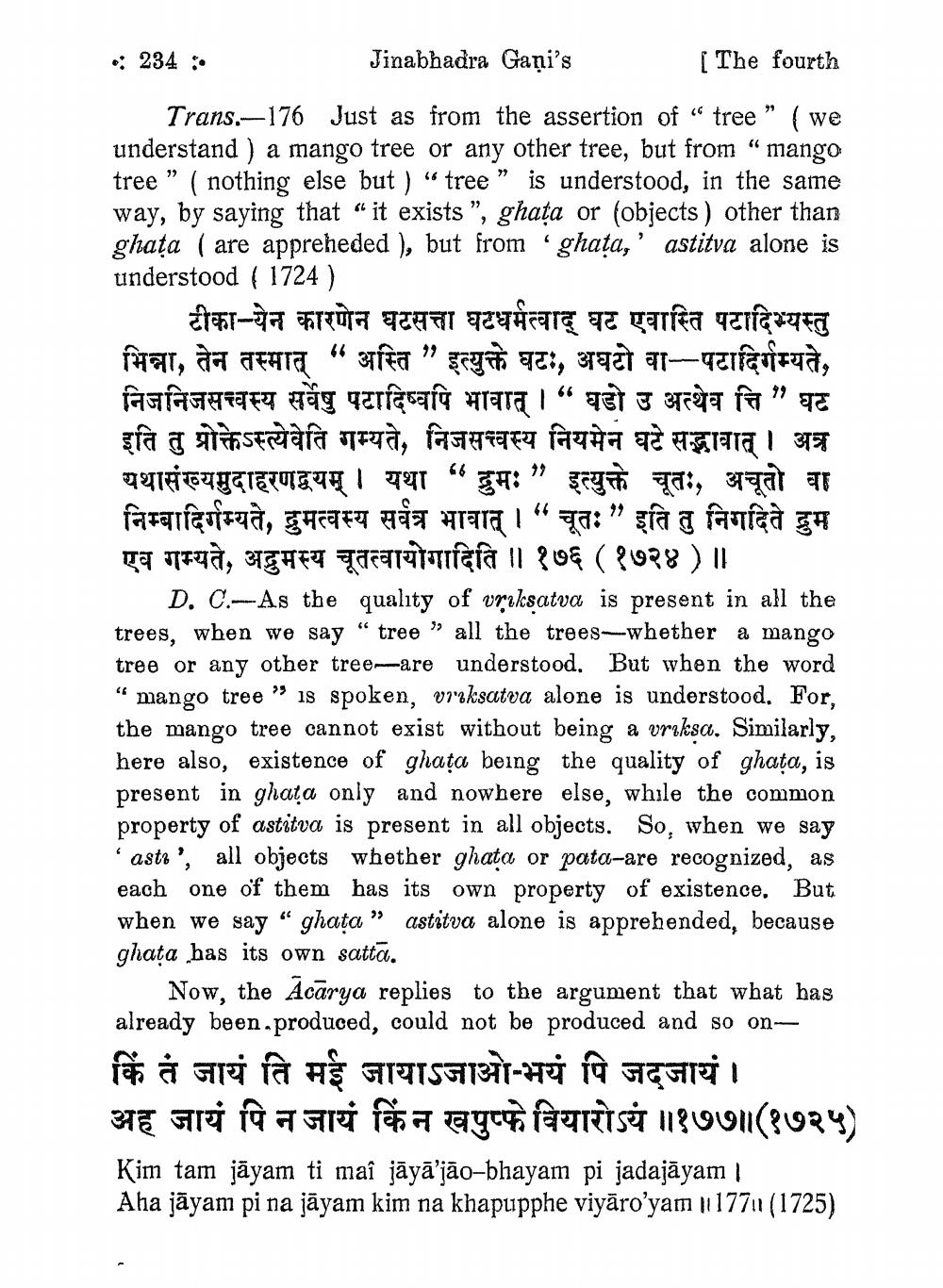________________
Jinabhadra Gani's
[ The fourth
"
Trans.-176 Just as from the assertion of "tree" (we understand ) a mango tree or any other tree, but from “ mango tree ( nothing else but ) "tree" is understood, in the same way, by saying that “ it exists", ghata or (objects) other than ghata ( are appreheded ), but from ghata, astitva alone is understood ( 1724 )
(
.: 234 :•
66
"
टीका - येन कारणेन घटसत्ता घटधर्मत्वाद् घट एवास्ति पटादिभ्यस्तु भिन्ना, तेन तस्मात् अस्ति इत्युक्ते घटः, अघटो वा - पटादिर्गम्यते, निजनिजसच्चस्य सर्वेषु पटादिष्वपि भावात् । " घडो उ अत्थेव त्ति ፃ घट इति तु प्रोक्तेऽस्त्येवेति गम्यते, निजसत्त्वस्य नियमेन घटे सद्भावात् । अत्र यथासंख्यमुदाहरणद्वयम् । यथा द्रुमः इत्युक्ते चूतः, अचूतो वा निम्बादिर्गम्यते, द्रुमत्वस्य सर्वत्र भावात् 1 चूत: " इति तु निगदिते द्रुम एव गम्यते, अद्रुमस्य चूतत्वायोगादिति || १७६ ( १७२४ ) ॥
66
44
"6
D. C.-As the quality of vriksatva is present in all the trees, when we say tree "all the trees-whether a mango tree or any other tree-are understood. But when the word " mango tree is spoken, vriksatva alone is understood. For, the mango tree cannot exist without being a vriksa. Similarly, here also, existence of ghata being the quality of ghata, is present in ghata only and nowhere else, while the common property of astitva is present in all objects. So, when we say 'aste', all objects whether ghata or pata-are recognized as each one of them has its own property of existence. But when we say "C ghata' astitva alone is apprehended, because ghata has its own satta.
Now, the Acarya replies to the argument that what has already been.produced, could not be produced and so on
किं तं जायं ति मई जायाऽजाओ भयं पि जदजायं । अह जायं पि न जायं किं न खपुष्फे वियारोऽयं ॥ १७७॥ (१७२५)
66
"
""
Kim tam jāyam ti maî jāyā'jão-bhayam pi jadajāyam |
Aha jāyam pi na jāyam kim na khapupphe viyāro 'yam || 177 (1725)




